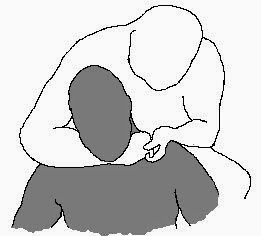I have, over the past few years, acquired a sizable collection of martial arts books. Most of these are fortunately in e-format since empty shelves are somewhat rare in my household. A significant portion of these books were first published in the Second World War. A few of these titles were obviously written to make a quick buck. Many of the others, however, are genuine in their wish to teach the reader how to survive on the battlefield or during the anticipated invasion of the British Isles.
In the late 30s and the 40s there was much less awareness of martial arts than there is today. Judo and Jiu-jitsu were relatively well known with some clubs in Europe dating back to Victorian times. To this we can add various domestic variations of boxing and wrestling. Savate was also know although more popular in French-influenced areas. Karate was not particularly well known, having only become popular in mainland Japan a few decades before. Other arts, such as the majority of Chinese styles, were not taught to Westerners or foreigners.
Not surprisingly, the majority of these wartime close combat handbooks were chiefly based on Judo and Jiu-jsitsu techniques.
When looking at these wartime instruction books Moshé Feldenkrais's Practical Unarmed Combat” does stand out as something a little different. Feldenkrais was asked to devise an effective combat course for units such as the local Home Guard, who did not have the time for extensive training in unarmed combat. Feldenkrais devised a ten lesson program, each lesson taking about an hour, including ample time to practice and repeat the techniques used.
The foundation of this course was a single technique, taken from Judo. The technique used is a variant of Hadaka-jime. Hadaka-jime means “Naked Strangle”. Usually this term is used for a hold where one arm wraps around the neck and the other arm forces the head forwards. This variant is often called a “Japanese Strangle” or “Figure Four Choke”. If you google “Hadaka-jime” this will usually be the technique you see. The Hadaka-jime that Feldenkrais uses is somewhat different, using one hand to pull on the other and forcing the head forward with the right shoulder. My own name for this variation is a “Neck Roller”. I don’t think Feldenkrais ever uses the term “Hadaka-jime” in the original book. The original text was republished with some additional material as “Hadaka-jime: Practical Unarmed Combat” in 2009. Incidentally, the “Neck Roller” was part of the additional content added to the Global Edition of “Attack, Avoid, Survive”.

It is deceptive to think of the technique Feldenkrais advocates as a simple stranglehold. Applied with vigour it is also break an enemy’s balance, crush a larynx or break the neck. Practically, Feldenkrais notes : “You can also just bring the opponent on to his back, then kick in the region of his ear and you are again ready to fight other enemies” The early lessons of the book detail how to apply the basic technique under a variety of conditions and situations.

A later pair of lessons deals with knife attacks and deflecting them with an inward parry. The important concept of the timing of parries is introduced here, as discussed in yesterday’s blog. The parry can be followed by the Neck Roller attack to the neck learnt in earlier lessons.
The next lessons concern how to fight an enemy armed with a bayonet mounted on a rifle. As one might expect, avoidance of the bayonet is followed by a neck attack. For situations where this is not the most practical attack the soldier is introduced to a couple of kicks that can be applied to the groin, a knife-hand attack to the throat and a stomping kick to the back of the knee.
If you are on the inside gate and deflect an enemy’s bayonet attack an enemy may follow through with a butt strike. Feldenkrais’s solution to this is interesting.
The bayonet thrust is avoided by a twist of the torso and an inward parry with the left arm. The right hand makes contact with the rifle barrel to control it. The enemy then attempts to strike with the rifle butt so the left forearm is moved to intercept it with an outward action. With both hands occupied neutralising the rifle the soldier kicks the enemy in the groin.

Regular readers of this blog or readers of my book will recognize aspects of Long Har Chuan in this sequence. An inward parry is taken over by an outward action, the grabbing of the rifle barrel. The outward action of one side allows the other side to be used; the interception of the rifle butt. Each arm making an outward defensive action while one leg kicks? Yes, that is the same as Tai Chi’s White Crane Spreads Wings!